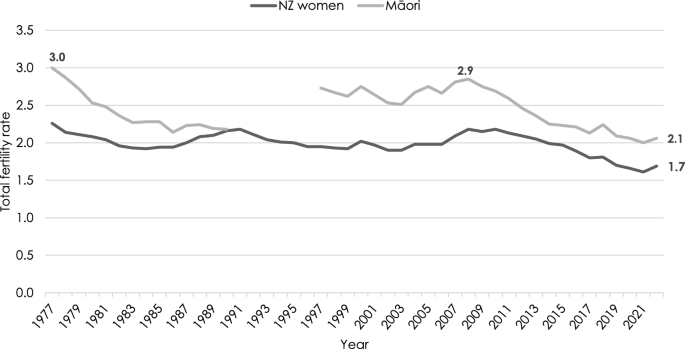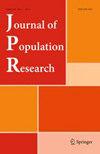Indigenous fertility in Aotearoa New Zealand: How does ethnic identity affect birth spacing and timing?
IF 1.2
Q2 DEMOGRAPHY
引用次数: 0
Abstract
Abstract The survival of Indigenous peoples in the CANZUS states of Canada, Australia, Aotearoa New Zealand, and the United States is nothing short of remarkable. Not only have Indigenous peoples thwarted colonial tropes of the vanishing native but, for decades, Indigenous population growth rates have significantly outpaced those of the dominant settler populations. The future survival of Indigenous peoples fundamentally rests on continued natural increase, and understanding the causes and consequences of fertility behaviour is critical. While total fertility rates for Indigenous women in CANZUS countries are relatively low, childbearing tends to be concentrated at younger ages in contrast to the dominant white populations. The fertility transitions of both settler and Indigenous populations in the CANZUS states are well documented, however, a significant gap remains: how cultural factors shape contemporary Indigenous fertility behaviours. Using Aotearoa as a case study, we explore the relationship between Māori cultural identity, birth timing, and the duration of birth intervals. We use the 1995 New Zealand Women: Family, Employment and Education survey data to further test the impact of cultural identity on birth transition rates using the piecewise exponential model and Kaplan-Meier estimates. We find that women who identify Mainly Māori (exclusively or primarily) are at greater risk of bearing much earlier to first birth but not necessarily subsequent births. However, because of the earlier start, Māori have a longer reproductive window to bear more children, and at higher birth orders still bear earlier than non-Māori. The empirical evidence strengthens our case to suggest that cultural orientation has some influence on Indigenous fertility and contributes to the development of Indigenous-centred theories of fertility and demography more broadly.

新西兰奥特罗阿的土著生育率:种族认同如何影响生育间隔和生育时间?
在加拿大、澳大利亚、新西兰和美国的CANZUS州,土著民族的生存是值得注意的。土著人民不仅挫败了土著消失的殖民比喻,而且几十年来,土著人口的增长率大大超过了占主导地位的移民人口的增长率。土著人民未来的生存从根本上取决于持续的自然增长,了解生育行为的原因和后果是至关重要的。虽然CANZUS国家土著妇女的总生育率相对较低,但与占主导地位的白人人口相比,生育往往集中在较年轻的年龄。CANZUS各州的定居者和土著人口的生育转变都有很好的记录,然而,一个重要的差距仍然存在:文化因素如何影响当代土著的生育行为。以Aotearoa为例,探讨Māori文化认同、生育时间和生育间隔时间之间的关系。我们使用1995年新西兰妇女:家庭、就业和教育调查数据,使用分段指数模型和Kaplan-Meier估计进一步测试文化认同对出生过渡率的影响。我们发现,主要识别为Māori(完全或主要)的女性在第一次生育之前生育的风险更大,但不一定是后续生育。然而,由于开始时间较早,Māori有较长的生育窗口来生育更多的孩子,并且在更高的出生顺序下仍然比non-Māori生育更早。经验证据加强了我们的观点,表明文化取向对土著生育率有一定影响,并有助于更广泛地发展以土著为中心的生育率和人口统计学理论。
本文章由计算机程序翻译,如有差异,请以英文原文为准。
求助全文
约1分钟内获得全文
求助全文
来源期刊

JOURNAL OF POPULATION RESEARCH
DEMOGRAPHY-
CiteScore
2.30
自引率
0.00%
发文量
18
期刊介绍:
The Journal of Population Research is a peer-reviewed, international journal which publishes papers on demography and population-related issues. Coverage is not restricted geographically. The Journal publishes substantive empirical analyses, theoretical works, applied research and contributions to methodology. Submissions may take the form of original research papers, perspectives, review articles and shorter technical research notes. Special issues emanating from conferences and other meetings are also considered.
 求助内容:
求助内容: 应助结果提醒方式:
应助结果提醒方式:


